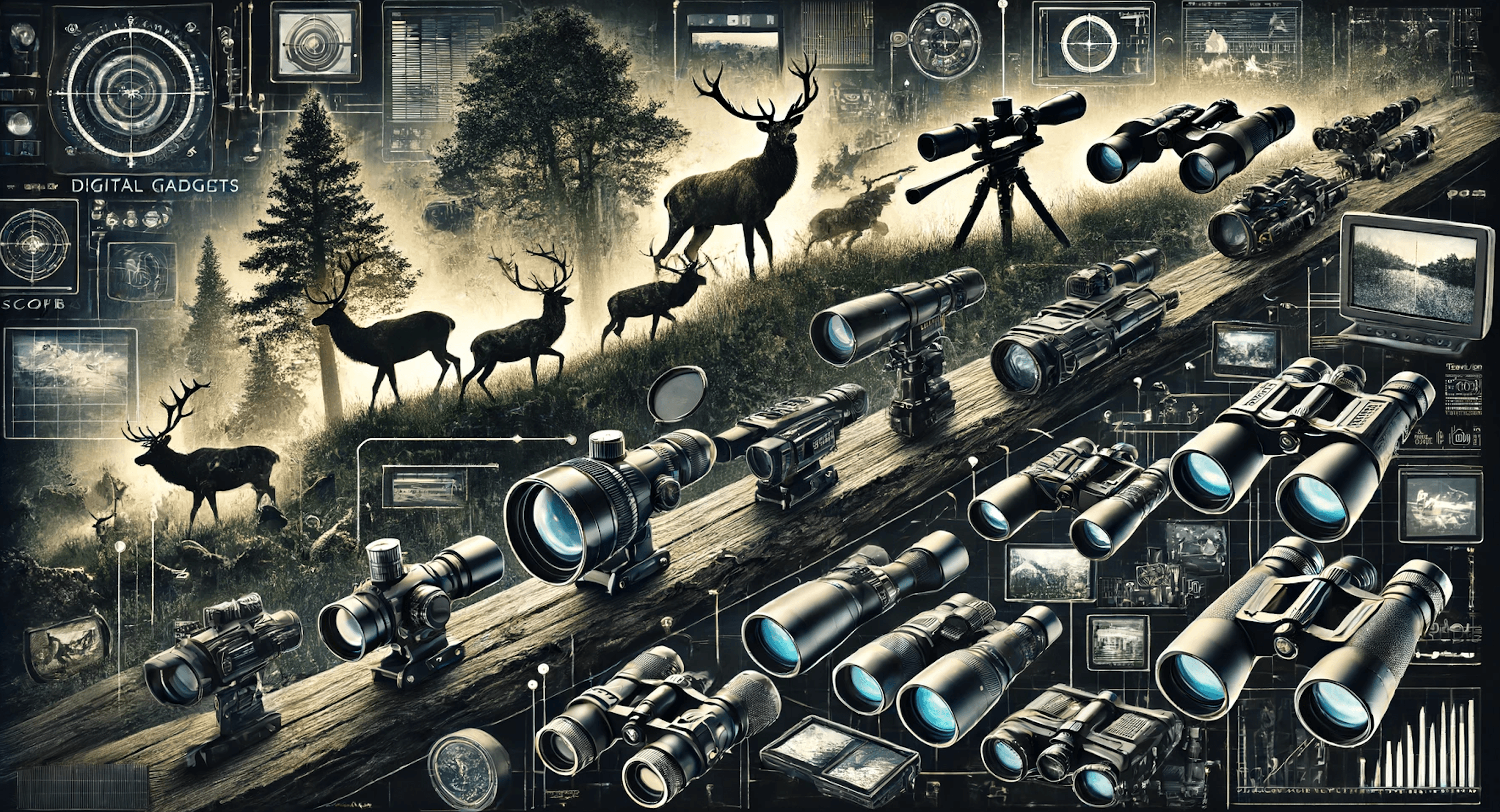The Evolution of Digital Gadgets for Hunting

Introduction
Hunting has been an integral part of human history, evolving from primitive methods to highly sophisticated techniques. The advent of digital gadgets has revolutionized the hunting experience, offering hunters unprecedented precision, efficiency, and convenience. This article delves into the history and evolution of digital gadgets for hunting, tracing their development from early innovations to the cutting-edge technology of today.
Early Innovations in Hunting Technology
Pre-Digital Era
Before the digital age, hunters relied on basic tools such as bows, arrows, and spears. Over time, advancements in metallurgy and engineering led to the development of more effective weapons like rifles and shotguns. Despite these improvements, the fundamental challenge remained: enhancing accuracy and effectiveness in diverse hunting conditions.
Optical Enhancements
The introduction of optical devices marked a significant leap in hunting technology. Telescopic sights, developed in the early 19th century, allowed hunters to aim more accurately over long distances. These early optical devices were the precursors to modern digital optics, setting the stage for further technological advancements.
The Dawn of Digital Gadgets in Hunting
Early Digital Scopes
The first digital scopes emerged in the late 20th century, combining traditional optics with electronic enhancements. These early models featured basic digital displays and rudimentary rangefinding capabilities. Though primitive by today’s standards, they represented a significant step forward in hunting technology.
Night Vision Technology
Night vision technology, initially developed for military use, began to trickle into the hunting world in the late 20th century. Early night vision scopes and goggles used image intensification technology to amplify ambient light, allowing hunters to see in low-light conditions. This technology dramatically expanded hunting opportunities, particularly for nocturnal game.
Advancements in Digital Hunting Gadgets
Thermal Imaging
Thermal imaging technology, which detects heat signatures, revolutionized hunting in the early 21st century. Unlike night vision, thermal imaging works in complete darkness and through obstacles like fog and foliage. This advancement provided hunters with a powerful tool for detecting game in challenging conditions.
Rangefinders
Digital rangefinders, which measure the distance to a target using laser technology, became widely available in the early 2000s. These devices significantly improved shooting accuracy by providing precise distance measurements, enabling hunters to adjust their aim accordingly.
Integrated Digital Scopes
Modern digital scopes integrate a variety of technologies, including high-definition displays, ballistic calculators, and Wi-Fi connectivity. These scopes provide real-time data, video recording, and enhanced aiming capabilities, transforming the hunting experience.
Recent Innovations and the Future of Digital Hunting Gadgets
Smart Scopes
The latest generation of smart scopes incorporates artificial intelligence and advanced algorithms to assist hunters in making accurate shots. Features such as auto-ranging, target tracking, and environmental sensing help hunters optimize their performance in real-time.
Wearable Technology
Wearable gadgets, such as digital watches and augmented reality glasses, are beginning to make their mark in the hunting world. These devices provide hunters with valuable information, such as weather conditions, GPS navigation, and real-time tracking, directly on their wrists or in their line of sight.
Drones
Drones equipped with high-resolution cameras and thermal imaging sensors offer a new perspective on hunting. They can be used for scouting, tracking game, and even retrieving downed animals in difficult terrain.
Impact of Digital Gadgets on Hunting Practices
Enhanced Accuracy and Efficiency
Digital gadgets have significantly improved hunting accuracy and efficiency. Tools like rangefinders, thermal imagers, and smart scopes reduce the margin for error, allowing hunters to make precise, ethical shots.
Increased Accessibility
Advancements in digital technology have made hunting more accessible to a broader audience. Novice hunters can benefit from intuitive gadgets that assist with aiming, tracking, and environmental analysis, leveling the playing field with more experienced hunters.
Ethical and Conservation Considerations
While digital gadgets have enhanced hunting efficiency, they also raise ethical and conservation concerns. The increased effectiveness of these tools can lead to overhunting if not regulated properly. Responsible use and adherence to local hunting laws are essential to ensure sustainable hunting practices.
Conclusion
The evolution of digital gadgets for hunting is a testament to the remarkable advancements in technology over the past few decades. From early optical devices to sophisticated smart scopes and drones, these innovations have transformed hunting into a high-tech pursuit. As technology continues to evolve, the future of hunting promises even more exciting developments, further enhancing the capabilities and experiences of hunters worldwide.






